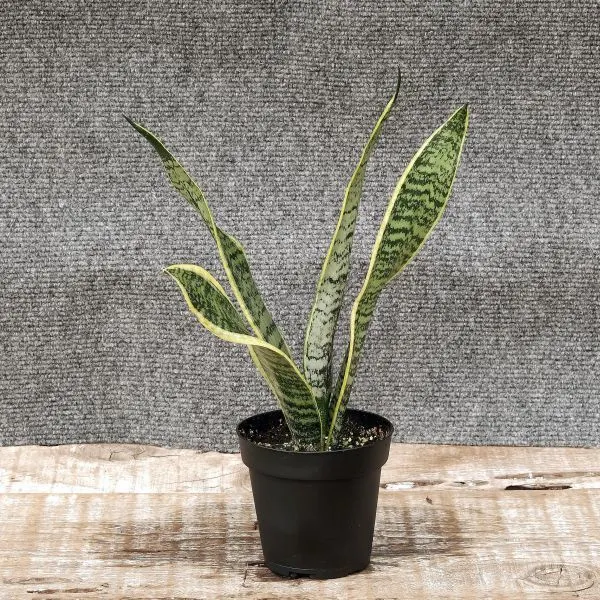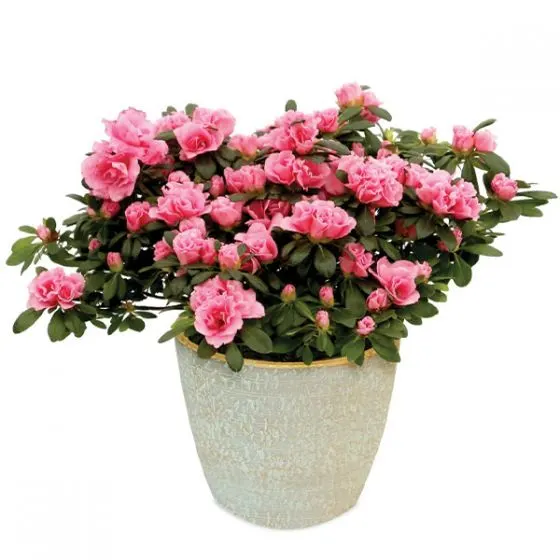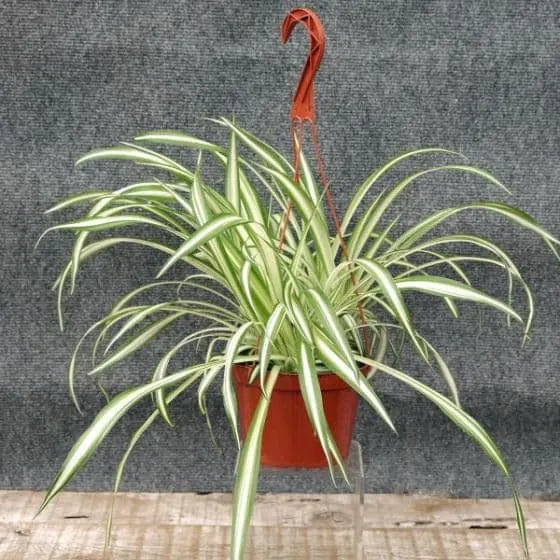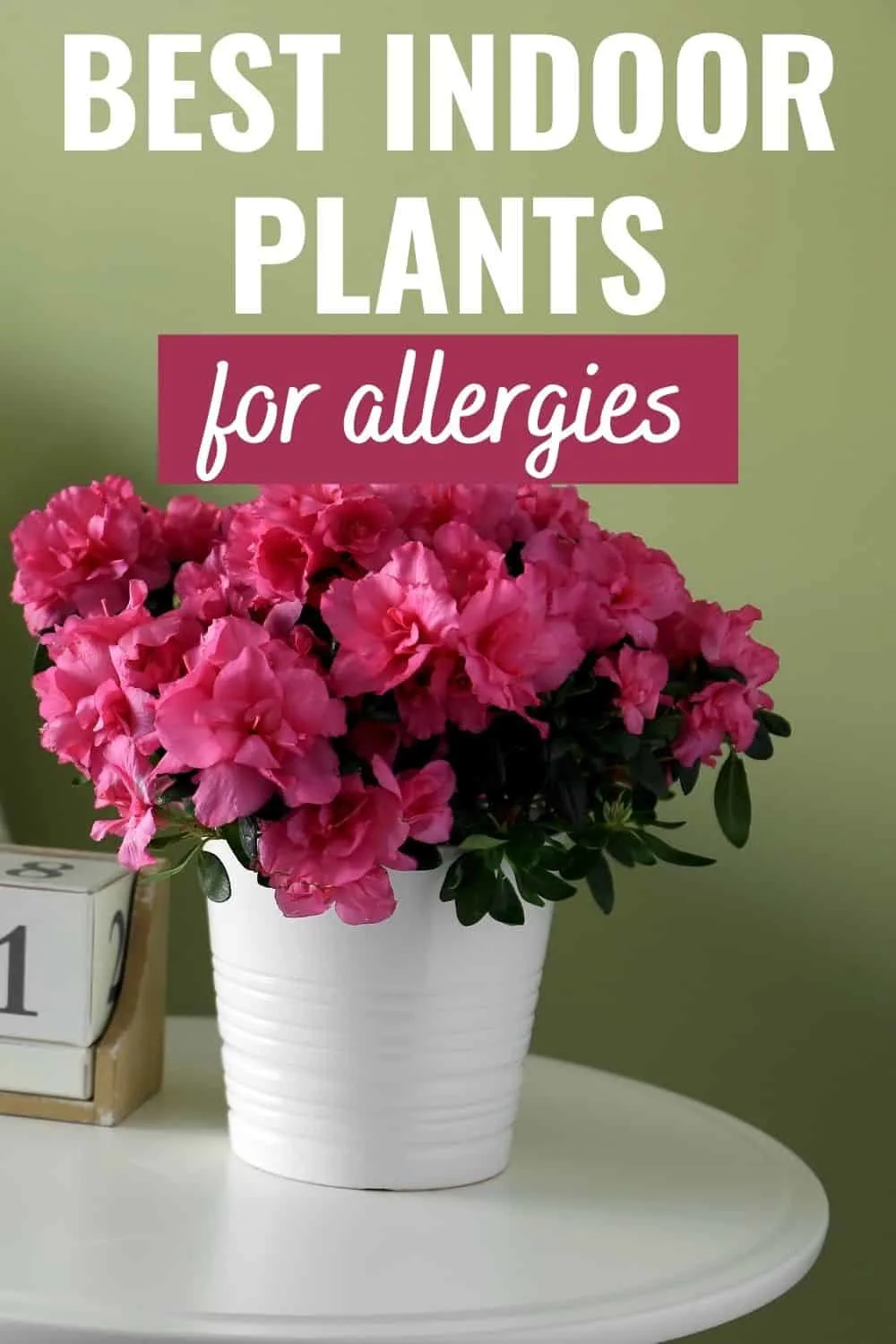For some people, allergies come and go. You may have certain seasons that are harder on you than others, or you may be one who suffers from allergies year-round. Outdoor allergies can be avoided, to an extent, but what some people don’t realize is that some outdoor allergies will always seep into your home, no matter what you do.

Some ways to help reduce and prevent outdoor allergies from getting inside include:
- Removing your shoes at the door (and having guests do the same)
- Leave windows closed and use filtering central heat and air system
- Change your “outdoor” clothes into house clothes when you come inside
- Choose air-filtering houseplants to help improve indoor air quality
There are some things we can’t control, but for the things that we can, we can make our symptoms a little bit better. Here are some picks for the best indoor plants for allergies that you can feel safer about having in your home.
Best Indoor Plants for Allergies
If you or someone in your home has allergies, you may be worried about bringing plants into your home that can make their allergies worse. This is a common and realistic fear since many plants do carry pollens or other dander on them that can make an allergic person react.
However, what you may not know, is that for most people, not all plants are off-limits. If you have severe and life-threatening allergies, you should always speak to a trusted medical professional before bringing anything, including indoor plants, into your home. For most people with seasonal allergies, however, certain indoor plants can actually help.
Here are some plants to consider if you have allergies:
1. Peace lily (Spathiphyllum wasllisii)
The beautiful plant that got its name because it blooms flowers that look like lilies a few times a year, but really are not lilies, are a great choice for people with indoor allergies. The peace lily is at the top of the list of indoor plants that help cleanse the air. They will remove Volatile Organic Compounds (VOCs) from the air you breathe, making it cleaner and safer.
One thing to note about Peace lily is that it is highly toxic to animals and people. You should keep away from pets and small children. It has been known to be deadly for cats, even from just being near it.
2. Devil’s Ivy/ Pothos (Epipremnum aureum)
Another popular choice for people with allergies is pothos. There are a few species of this for you to enjoy. All will cleanse the air, but some believe the golden pothos is just a bit better at it than other pothos types.
We can’t find any specific scientific studies that compare the different types of pothos, but we do see golden pothos specifically named on the NASA list of healthy air plants.
3. Bamboo palm (Chamaedorea seifrizii)
Bamboo palm is a great way to bring a tropical feel into your home. This plant can grow tall and looks good on a table or later in a pot on the floor as it gets tall. This plant actually tops the list of air-purifying plants and will remove toxins like carbon monoxide, formaldehyde, xylene, and even carbon from the air you breathe.
4. Snake plant (Sansevieria trifasciata)

Snake plants are a common, popular houseplant you see in homes, offices, and even medical settings. The reason they are one of the few plants you can find in a doctor’s office is because they are so easy to care for, and they are great for indoor air quality.
It’s virtually unheard of to see someone allergic, so they won’t trigger people’s allergies when they visit. This also means they are great to have in your own home. If you’re new to indoor plants, the snake plant is also a great choice because of how easy it is to care for it.
5. Azalea (Rhododendron spp.)

Azaleas are a beautiful, flowering plant that is commonly considered a great choice for people with allergies or asthma. This is because they help cleanse the air that you breathe. While most flowering plants have pollens that can make allergies worse, these are on the “safe” list. If you want the look of flowers without the pollen or other allergens that can come with them, consider azaleas.
Try this “With Love Red Florist Azalea“: it’s gorgeous!
6. Spider plant (Chlorophytum comosum)

If you’re not familiar with the spider plant, then you’re in for a treat. This is a fun, easy-to-grow plant, that does well in hanging baskets that allow the “pups” or babies to grow and hang down. They can later be propagated into even more spider plants if you want.
This is a great plant for children and beginners who are learning about indoor plants, too. These plants do well in bathrooms also, which is sometimes a source of allergies for people.
7. Madagascar Dragon Tree Plant (Dracaena marginata)
Dracaena of any variety are great for indoor air quality. They don’t produce allergens and they help cleanse the air, but the Dragon tree plant is a beautiful, palm-like plant that can grow really tall in the right settings and looks fabulous in any room.
Some palms can be triggering for allergy sufferers, so this Dracaena is a good way to get that tropical look without setting off a bout of allergies.
8. Philodendron
Like the pothos, philodendrons are a vine plant that can be trained up a trellis or spread out across a room or even up a wall. They are usually green but can have other colorations or variegation in some types. They are easy to grow, are forgiving of different lighting conditions, and are forgiving if you forget to water them. They can also bounce back from overwatering to a degree, as long as they don’t get rot or harmful fungus in the soil.
9. English ivy (Hedera helix)
Studies have found that English ivy will help reduce the mold spores in the air by a great amount, which is great news for allergy sufferers. Mold gets into the air you breathe in your home, especially around moist areas like bathrooms or basements. There’s little you can do to prevent it completely but having great plants like the English ivy around will help reduce those spores and clean up the air you breathe.
Just are there are plants that are good for your allergies, there are also some that are not. Let’s take a quick look.
Plants to Avoid if You Have Allergies
If you have allergies, there are certain indoor plants that can make your symptoms worse. These include chrysanthemums (or “mums” as they are commonly known), African violets, juniper, male palms and yuccas, weeping figs, ferns, and bonsai.
While many of these are common and popular, they’re not the best choices for allergy sufferers. If you do have them in the home, they should be kept out of common rooms and bedrooms with allergy sufferers, and you should have some air cleansing plants in the home as well to help balance it out.
Caring for Your Indoor Plants when You Have Allergies
If you have allergies, there are also some things you can do to help your houseplants with their job of improving the indoor air quality. For one, you should take other steps to reduce allergens in your home, like air filters that you change regularly, and keeping the windows closed, especially during triggering allergy seasons.
You can also dust your plants regularly and gently with mild soap and water. Keeping them free of dust will help them purify the air more easily and it also prevents allergens in the dust from settling on your plants, which you can later breathe in.
Be sure to vacuum regularly (with a HEPA filter, if possible) and keep ceiling fans and light fixtures free of dust and build-up as well.
Conclusion of Best Indoor Plants for Allergies
In conclusion, the best indoor plants for allergies are those that work to cleanse the air, those that do not contain mold or fungal spores, and those that are not male palms. Just because you, or someone in your home, suffers from allergies does not mean you can’t have beautiful indoor plants.
This is not an exhaustive list of hypoallergenic house plants, but it is some of the most popular and the easiest to care for. You can choose your favorites from the list and get started but remember you can add on more later. And as many of us from the community know, keeping indoor plants can easily become a healthy, fun addiction.







